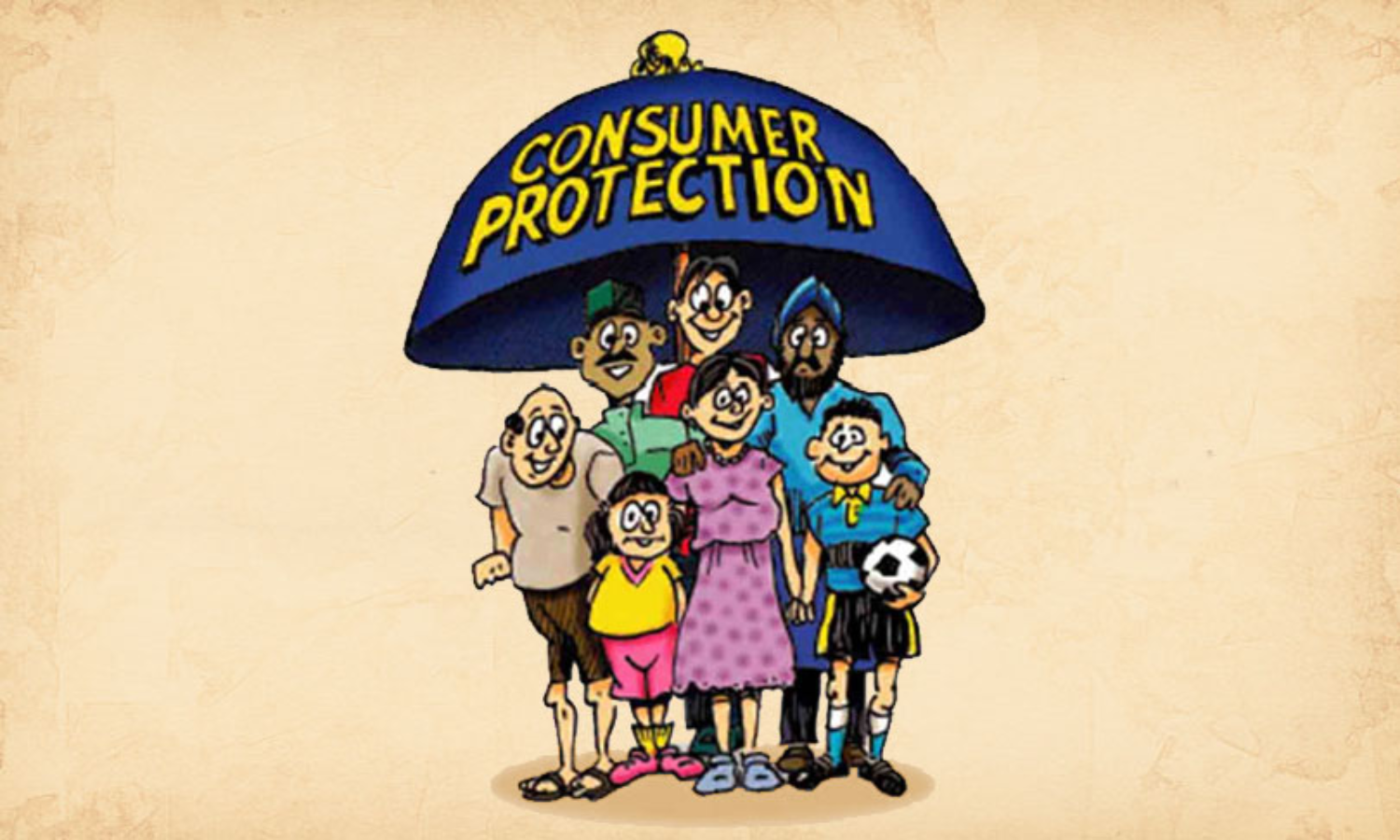A Fly In The Ointment: Legislative Error In Consumer Protection Act 2019

The mischief of the Consumer Protection Act, of 1986 (“Act”) was to provide the consumers with a redressal mechanism. It was a “social benefit-oriented legislation”[1], enacted to provide 'protection' to the interests of the consumer of both the goods and the services alike. According to the object of the Consumer Protection Act, 2019 (“New Act”), the New Act...
The mischief of the Consumer Protection Act, of 1986 (“Act”) was to provide the consumers with a redressal mechanism. It was a “social benefit-oriented legislation”[1], enacted to provide 'protection' to the interests of the consumer of both the goods and the services alike.
According to the object of the Consumer Protection Act, 2019 (“New Act”), the New Act appears to intend to achieve the same objective. However, a perusal of its provisions does not seem to allow it to do so. It is so because the definition of consumer in the New Act creates an unwelcomed division between two categories of products that a consumer may use and these are goods and services. It did away with the efforts that legislature had put to bring the definition of consumer with respect to goods and services in parity with each other, by introducing the changes by amendments in 1993 and 2002.
In contemporary marketplaces, there is no longer a clear differentiation between goods and services. Today, consumers often rely on the services of online delivery giants like Swiggy and Zomato even when purchasing goods. This demands a parity between the provisions dealing with the two classes of goods and services.
At this juncture, it is imperative to discuss in detail, the legislative history of COPRA, to be able to appreciate the differences brought by various amendments to the Act, analyse the rationale behind bringing the 2002 amendment and try to understand what made the legislature to revert the changes to the definition of consumer brought by this amendment.
Tracing The Legislative History Of The Consumer Protection Act
Section 2(1)(d)(i) of the Act defines a consumer. This section defines 'consumer' in two parts. While 2(1)(d)(i) explains who a 'consumer of goods' will consist of, 2(1)(d)(ii) defines a 'consumer of services'. An exception in the definition of consumer of goods as provided in the statute is that a person who obtains goods for resale or for any commercial purpose will not be considered as a consumer.[2] However, Consumer Protection (Amendment) Act, 1993, (“1993 Amendment”) added an explanation to section 2(1)(d)(i) which acted as an “exception to the exception”[3]. It provided that if the goods bought are used exclusively for the purpose of earning livelihood, by means of self-employment then it is covered under the definition of consumer. That is, such a consumer does not satisfy the exception laid down under the first clause to the aforementioned section.
The purpose of this explanation was to demarcate and narrow down the scope of 'commercial purpose' since the term was nowhere defined in the Act itself and could have been misused for preventing a rightful consumer from claiming the relief, in turn defeating the objective of the Act.
A careful reading of the 1993 Amendment helps us understand the intention of legislative behind enacting the same. It was to protect and allow a consumer who bought goods for earning his livelihood by way of self-employment and found such goods to be defective, to approach the redressal forums under the Act.[4]
Section 2(1)(d)(ii), which defined 'consumer of services', did not lay out any such exception; hence, the addition of an explanation to the same was not necessitated. This meant that even if a person hired any services for commercial purposes, he could still be a consumer for the purposes of the Act.
There was an unintended mismatch between the definition of 'consumer of goods' and that of 'consumer of services'. It was that while the use of goods for commercial purposes was excluded from the ambit of protection under the Act, a person hiring or availing services for commercial purposes could still be a 'consumer' as defined under the statute. This difference made the act seem inherently discriminatory, creating 2 classes of consumable products i.e. goods and services, without a clear objective.
To bridge this gap and to bring the two definitions at par with each other, the legislature introduced another amendment.
Understanding The Rationale Behind 2002 Amendment
The Consumer Protection (Amendment) Act, 2002, (“2002 amendment”) placed section 2(1)(d)(ii) on the same pedestal as was clause (i) of this section. This amendment inserted, “but does not include a person who avails of such services for any commercial purpose”[5] to the second sub-clause and made a simultaneous change in the explanation added by the 1993 amendment. Now, the explanation provided an exception, to the exceptions provided in first and second clauses of section 2(1)(d) of the Act.
This implied that a consumer would be excluded from the ambit of the Act if they buy goods or avail or hire services for any 'commercial purpose' but such 'commercial purpose' would not include using these as a means of livelihood by way of self-employment. The definition as amended by the 2002 amendment, did not discriminate between the two classes of consumable products.
As expounded by the Apex Court in the Shrikant G. Mantri[6] Case, the legislature did 2 things by bringing the 2002 amendment:
- It kept the commercial transactions, with respect to hiring or availing services, out of the purview of the definition of 'consumer' and brought the same on par with section 2(1)(d)(i), which had already kept out a person who bought goods for commercial purpose out of the ambit of the term 'consumer'.
- Secondly, it introduced an exception to this exception. This enabled a consumer of commercial services, who availed such services to earn a livelihood by means of self-employment, to seek protection under the Act.
The Amendment created a distinction between services availed or hired for commercial purposes and used for the same as against the services used for earning a livelihood by way of self-employment. This was a welcomed move since it catered to the purpose of the act which was to protect consumers from being exploited and providing them with a redressal mechanism. Furthermore, it being legislation for the benefit of the society at large, the provisions were required to be given wide interpretation, enabling maximum consumers to approach the redressals forums.
2002 Amendment: Why Has It Been Reversed?
The changes introduced by 2002 amendment were partly reversed by the New Act of 2019. Section 2(7) of the New Act defined consumer in two parts, as did the 1986 Act. While section 2(7)(i) defines a 'consumer of goods', the other part defines a 'consumer of services'. Both the parts mentioned the exception in case a consumer buys goods or avails or hires services, for 'commercial purpose' and excluded the same from the definition of 'consumer'. As under the provisions of the erstwhile Act, the definition of consumer in the New Act was also followed by an explanation.[7]
This explanation should have included an 'exception to the exception' with respect to both goods and services. It should have clarified and narrowed the scope of what would come under the ambit of 'commercial purpose' with respect to both the goods and the services, as did the 1986 Act, amended by 1993 and 2002 amendments. However, the explanation to section 2(7) of the New Act, mentioned such an exception only for the goods and not for services.
The effect of this was that a consumer of goods, who bought goods at a commercial scale but did not intend to use these for commercial purposes but rather wanted to use these to earn a livelihood by way of self-employment, was included in the definition of consumer under the New Act. However, the consumer of services, who hired or availed services at a commercial scale but did not intend to use these for commercial purposes but rather wanted to use these to earn a livelihood by way of self-employment, was excluded from the definition of consumer. This was an aberration from what the position was in the amended 1986 Act. One of the two changes brought by the 2002 amendment was reversed.
What potential rationale could exist for excluding a consumer of services from the scope of this explanation? Such a consumer may utilize the services availed or hired, either for personal needs or for engaging in 'substantial profit-oriented endeavours', just like a consumer of goods would. As is already there in the case of goods, there needs to be a similar distinction made between a consumer who intends to use services for commercial purposes and one who intends to use services for earning a livelihood, by way of self-employment.
If the act of dropping the phrase with respect to services from explanation is intentional, what prompted the parliament to undertake such a change which has a gamut of ramifications and without a clear objective, remains to be a pivotal question.
An understanding of the potential considerations prompting Parliament to introduce the 2002 amendment may be construed to suggest that the omission of the phrase from the 2019 Act, is a mere legislative error. This inference arises from the absence of a discernible rationale for Parliament's current perspective on the act's divergence from the objectives necessitating the 2002 amendment.
Navigating the legislative journey of the Consumer Protection Act shows a concerted effort by the legislature to ensure fair redressal mechanisms for consumers of both goods and services. The amendments introduced over the years, particularly the 2002 amendment, aimed to align the definitions of consumers for goods and services, thereby safeguarding individuals from exploitation while promoting self-employment opportunities.
However, the recent Consumer Protection Act of 2019 seems to have inadvertently reversed some of these crucial amendments, particularly regarding the definition of consumers of services for commercial purposes. This omission appears to be a legislative oversight rather than a deliberate policy shift, as it undermines the parity achieved by earlier amendments and potentially restricts access to consumer protection for the consumers of services, availing or hiring these for earning a livelihood by self-employment.
To keep the original intent of the Consumer Protection Act, intact and ensure comprehensive consumer rights, it is imperative for policymakers to reconsider and rectify this discrepancy. This would not only restore consistency within the Act but also uphold its fundamental objective of safeguarding consumer interests in today's dynamic marketplace.
Views are personal.
[1] National Insurance Co. Ltd. v. Harsolia Motors, 2023 LiveLaw SC 313
[2] Consumer Protection Act 1986, S. 2(1)(d)
[3] Laxmi Engineering Works v. P.S.G. Industrial Institute, (1995) 3 SCC 583
[4] Consumer Protection (Amendment) Act, 1993
[5] Consumer Protection (Amendment) Act, 2002
[6] Shrikant G. Mantri v. Punjab National Bank, 2022 LiveLaw (SC) 197
[7] Consumer Protection Act 2019, S. 2(7)




